Talk to Kev Hewitt about PVA bags and it’s instantly clear he leaves nothing to chance. Thankfully, this isn’t some sort of surgical precision out of the reach of normal anglers, it’s a common-sense approach any of us can replicate.
When to use solid bags
“PVA bags work all year round. In winter they’re especially good as carp don’t want to eat a lot and that little trap is more than enough. It’s also probably the best way of getting the quickest bite possible. So, if you see a fish show chuck a bag out there straight away and you’ve got every chance of a quick bite. There have been times where I’ve fished a new lake and had a bite within four or five minutes just by chucking a solid bag to a showing fish.
“I wouldn’t use them when it’s really weedy. Quite often you see people say ‘chuck a solid bag into weed’ but it’s not something I’m overly comfortable with. I’ve caught a few this way, but the presentation is too random for me. If you’re chucking it into silkweed, the bag will go into silkweed and it’ll fold over the top and make things really hard for the carp to find. If it’s really light weed, not a problem at all.
“Silt is absolutely fine too. If it’s really, really soft silt it could sink into it a bit, but I would recast slightly more regularly so you’re getting a fresh bag out there.”
YOU NEED A SET OF THE BEST CARP RODS TO GET YOUR SOLID BAGS OUT WITH ACCURACY.

The perfect mix
“The mix is really simple. I like 75 per cent Mini Combo pellets and 25 per cent Salmon Fry Crumb. I always want 2mm or smaller pellets because they compact the PVA bag down really nice and solid. When it’s more compact it casts further and it’s more aerodynamic and accurate.
NEW TO CARP FISHING? CHECK OUT THIS HELPFUL BEGINNERS GUIDE!
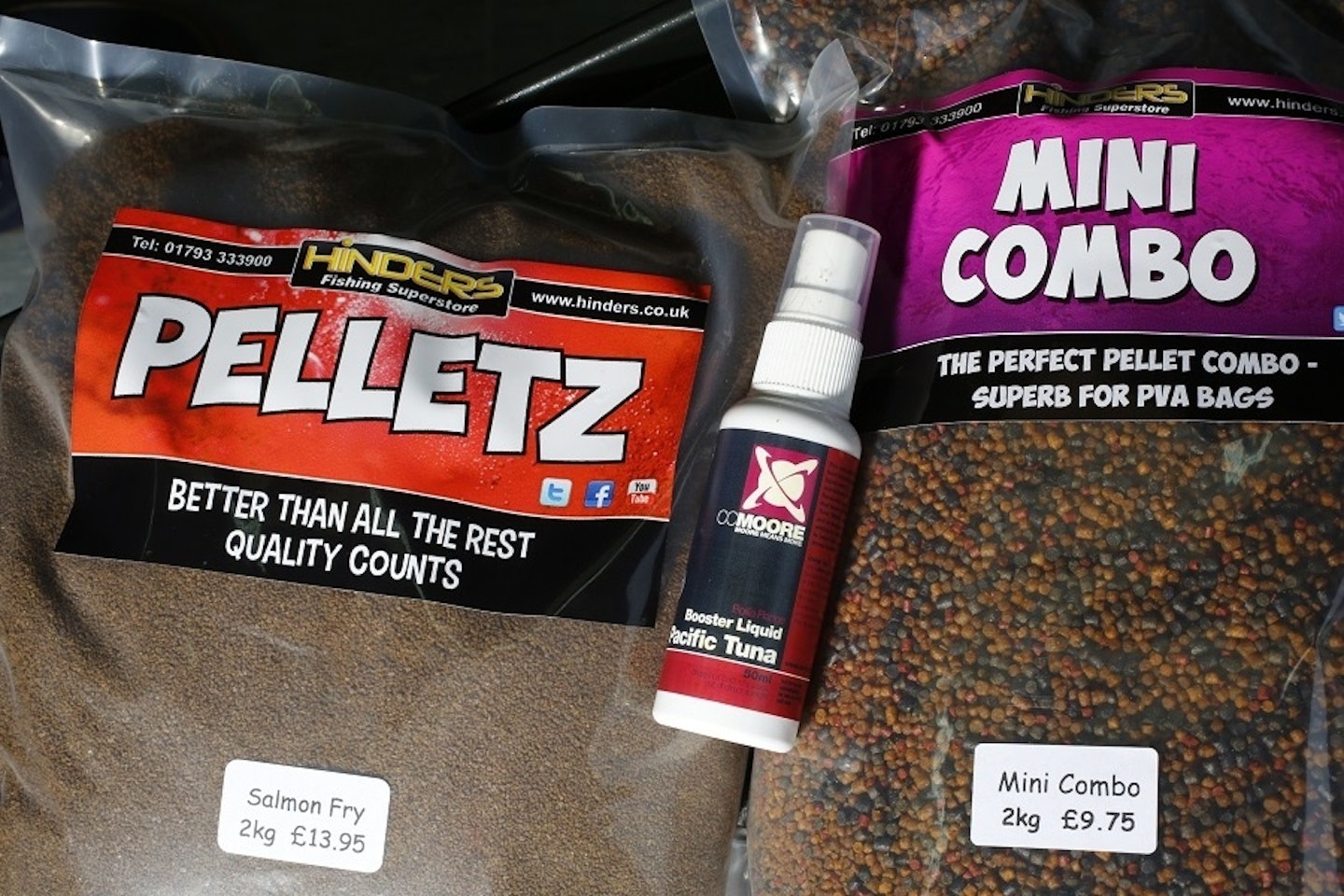
“To give it a bit of a boost I give it a few squirts of the CC Moore Pacific Tuna Booster Spray, which is really fishy and works really well with pellets.
“A lot of people make the mistake of using too many powdered ingredients, and if you test a PVA bag when it breaks down the powdered ingredients just float up. Salmon Fry Crumb sinks and all my pellets sink. I like the pile to stay nice and compact on the bottom.
“The hookbait is almost irrelevant. As long as you’ve got a small balanced hookbait the fish is almost sucking it up by accident.
“I used a size 7 ESP Gripper with a single grain of plastic corn, because that size is the perfect weight to slowly sink the corn so it’s balanced. I mount the corn lengthways and the eye of the hook sits on the deck and the corn pops up above, so the hook is actually buried in the pellets, so you can’t see the hook or the hooklink.
“The short hooklink, 3-4ins, sets the hook on the weight of the lead. It doesn’t allow the fish to move without setting the hook.”
IF YOU LOVE YOUR CARP FISHING, THE BEST CARP RIGS WILL HELP YOU CATCH MORE!
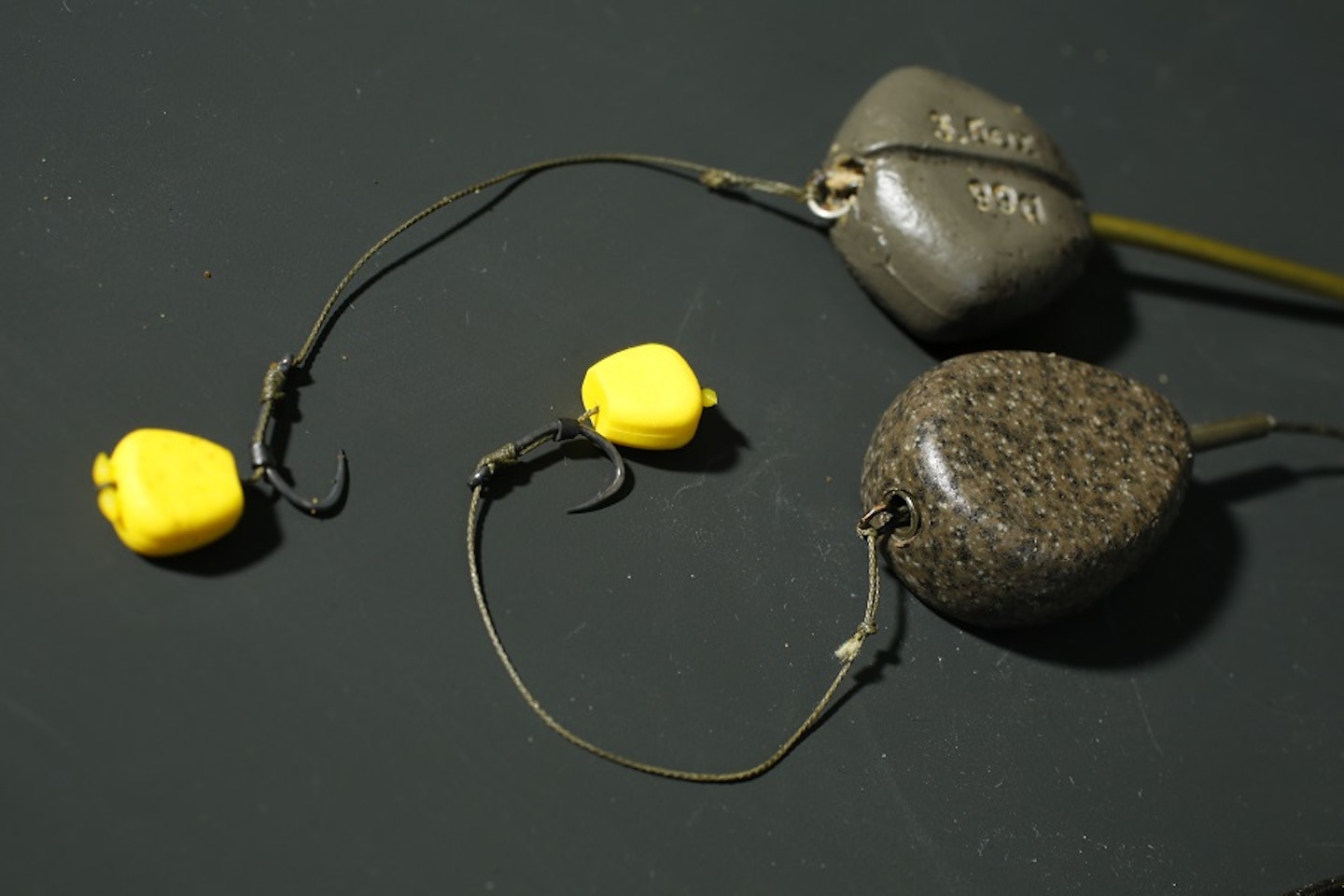
Watch your buoyancy
“I tie bags up in advance, whether it’s the night before or they’re left over from one session, and the longer you leave them the more they compact down.
“But, if you use a pop-up inside there, through whatever process the air gets sucked out of the pop-up over a period of time. So if you leave a pop-up in a tied-up bag for three weeks the pop-up actually goes harder and gains buoyancy, so it won’t be balanced. That’s why I use plastic corn, because it doesn’t ever change buoyancy. If you’re tying bags fresh you can use pop-ups.”
THE BEST FISHING BIVVIES WILL KEEP YOU DRY AND COMFORTABLE ON THE BANK!
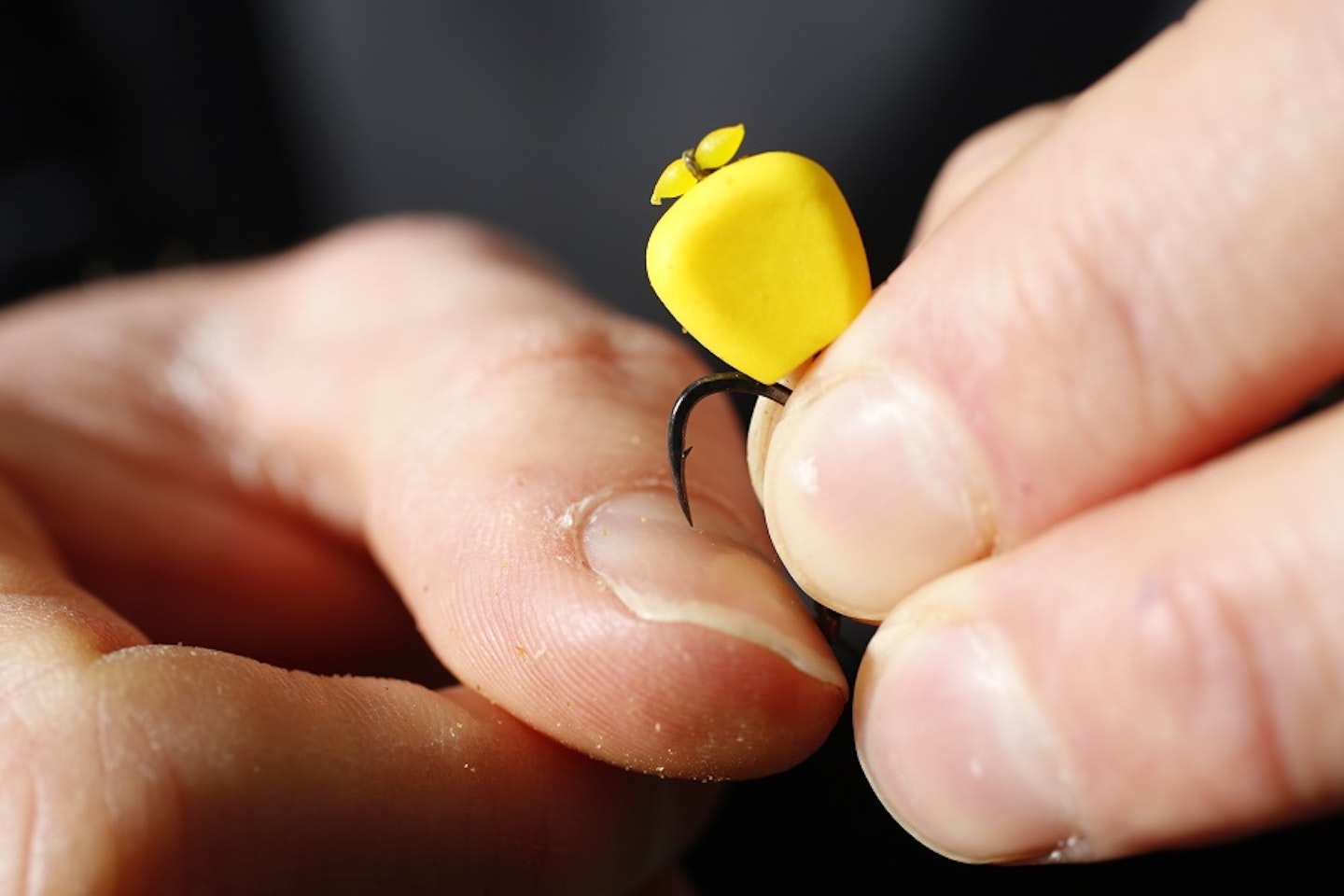
Don't drop the lead
“I don’t fish it drop-off style, even in weedy waters. With an inline lead, if a fish dives into the weed and you’re trying to get it out all the weed gathers around the lead, so you’re not actually putting pressure on the hookhold.
“There is the argument that if you drop the lead the fish will come to the surface and won’t get weeded in the first place, and that’s a valid argument, but I don’t lose many fish so I don’t need to change it. And I’d rather not lose the lead, a) because of the cost and b) because of the potential environmental impact, which is a debate for another day.”
IF YOU STRUGGLE ATTACHING YOUR HOOKBAITS, THIS GUIDE IF FOR YOU!

Casting weight and tackle
“I always, always use the mini PVA bags. When the big PVA bags break down it’s going to be more than a mouthful, which defeats the object of everything I’m trying to achieve.
“The second reason is because they cast further and you can get them more compact.
“I use a 12ft 3.25lb-test-curve rod and I can cast it well over 100yds, probably closer to 140yds, and I’m not a massive caster. My number-one choice would 10lb line and a shockleader for distance fishing, or 15lb straight through if leaders aren’t allowed.
“The lead is 3.5oz or 4oz. The latter is for long-range fishing or if it’s really windy. I know that sounds quite heavy but because I use the really small ESP bags you’re not actually putting loads of weight of bait in there. The heavier lead helps set the hook better.
“I set it up on a short leadcore leader, or, if the fishery doesn’t allow leadcore, I use an Avid Bag Stem. I prefer leadcore, though. I always attach loop-to-loop style to either the leadcore or the stem.”
FISHING A NEW WATER CAN BE TRICKY, BUT THESE EXCELLENT TIPS WILL HAVE YOU CATCHING FROM YOUR FIRST SESSION!

What to spod and when to recast
“When you’re spodding light particles the bait tends to spread out, but if you cast a PVA bag over the top you’re going to have one little patch that’s more concentrated and an easier mouthful for a carp. I often think that with a PVA bag a carp will home in on your hookbait quicker than it would do if you didn’t have the bag.
“Recasting depends on the venue. If I’m on a venue like Orchid where you’re only really fishing for one or two carp in 24 hours then I would happily give it up to 10 hours, maybe 12 hours overnight, but ideally six hours really. If I was fishing a runs water and I’m on fish it could be every two hours.
“If I’ve got all three on a solid bag I’ll maybe rechuck one an hour, so you’re actually chucking each bag once every three hours. On Oxlease one time all my bites came 45 minutes after casting out, so then you know to leave it probably an hour and 10 minutes before re-chucking. You wouldn’t want to chuck it every 30 minutes because your bites are every 45 minutes, but then you wouldn’t want to leave it longer than an hour and a half.
“If there are loads of roach around you need to keep casting more frequently because they’ll be eating the pellets.”
SPOD LIKE THIS AND YOU WILL CATCH MORE CARP!
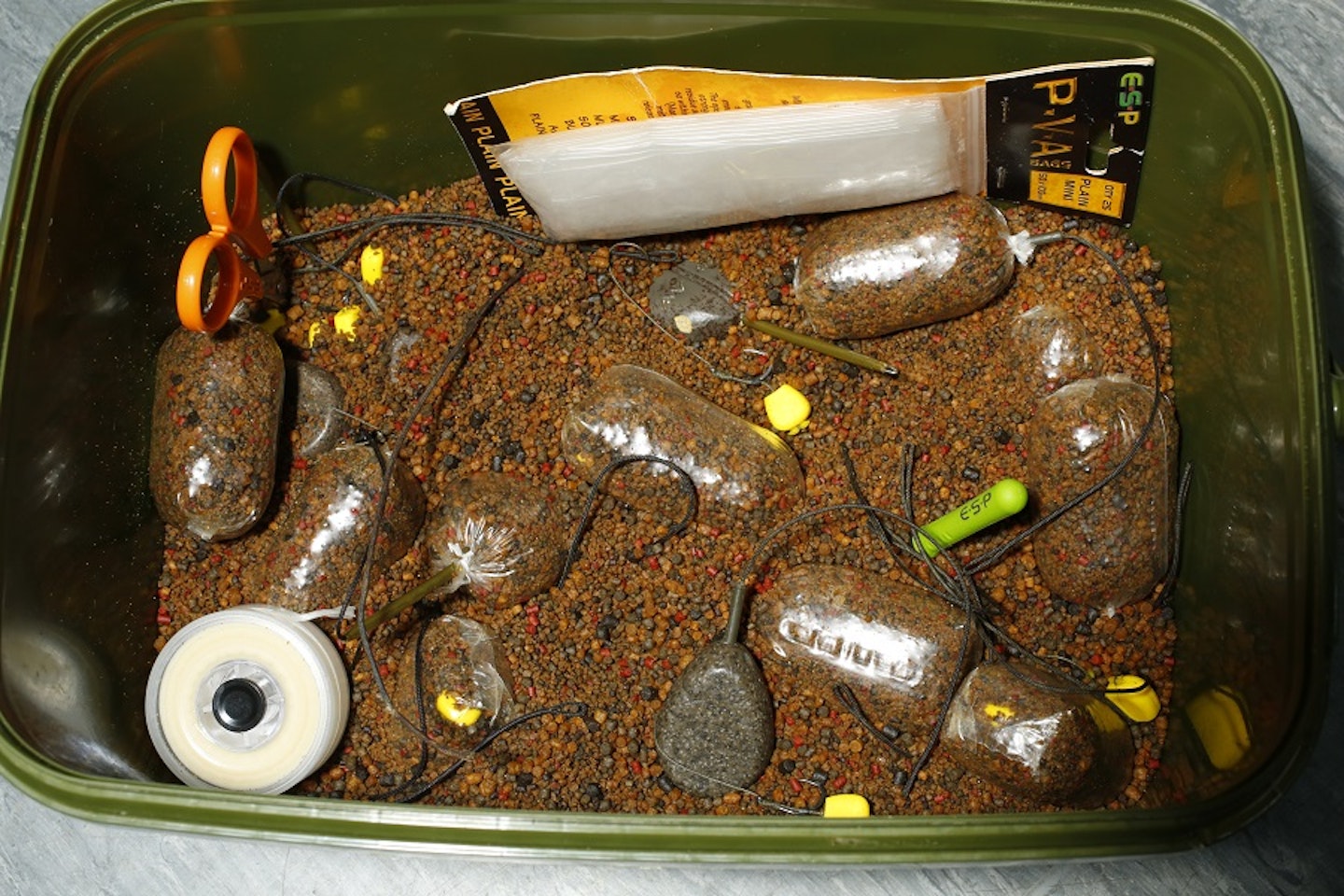
Kev's step by step guide to tying up a solid bag
- Take a mini ESP bag and blow into it so it’s not stuck together at any point.

- Put a tiny bit of mix in the bottom of the bag, just a pinch.
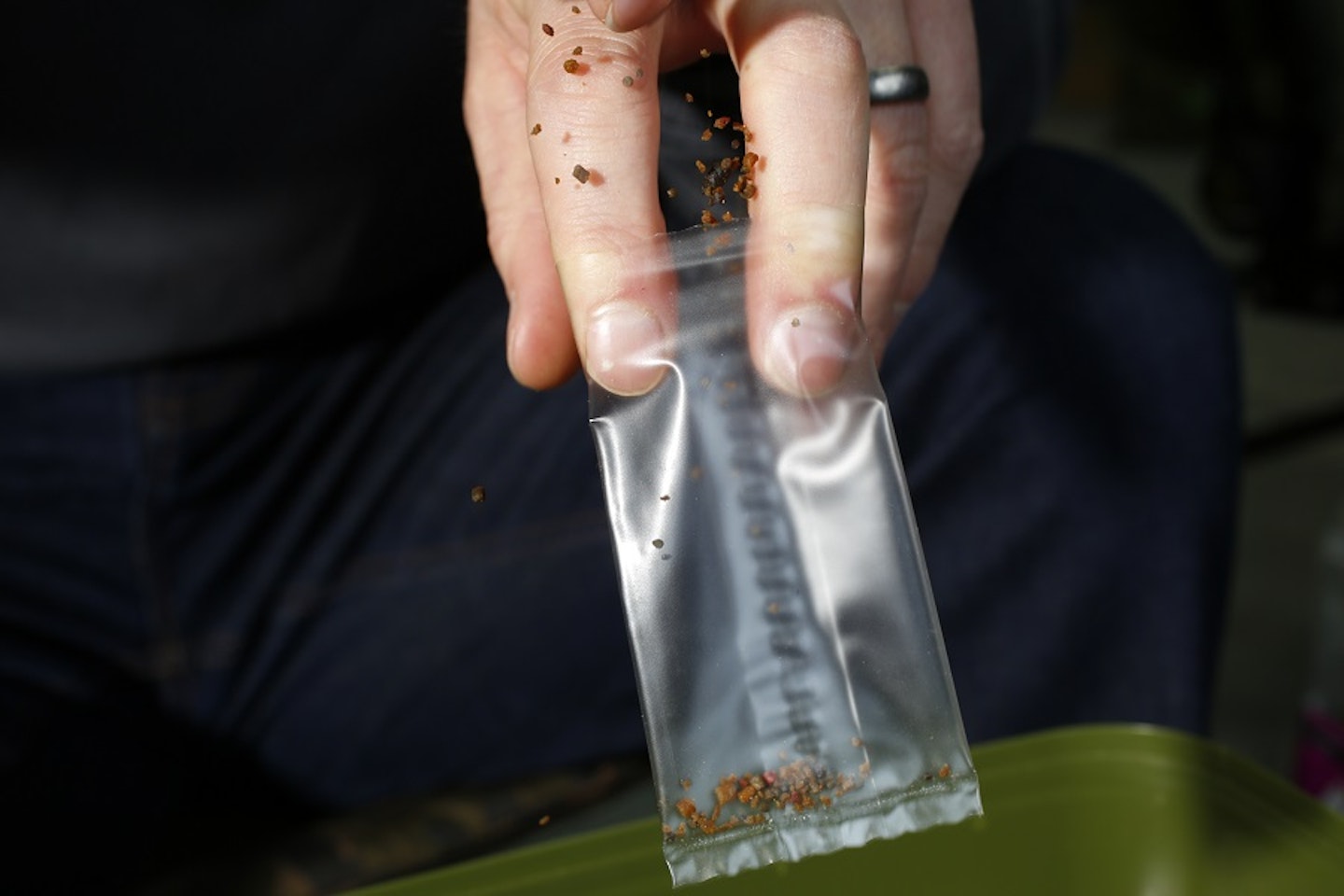
- I always make sure the hookpoint is facing the bottom of the bag so it’s not going to get caught in the hooklink at any point.
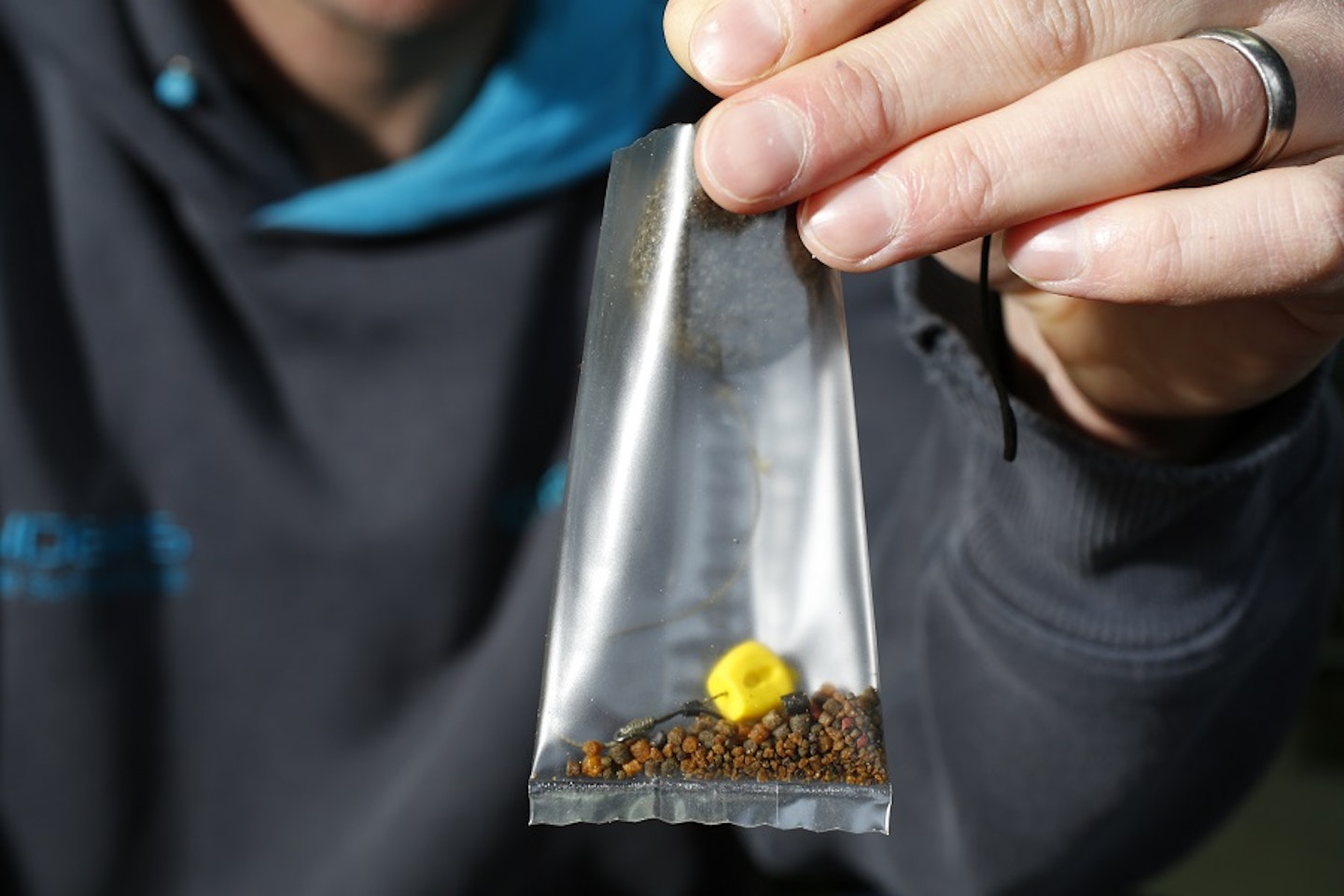
- I three-quarters fill it with pellets, then I just straighten out the hooklink a bit.
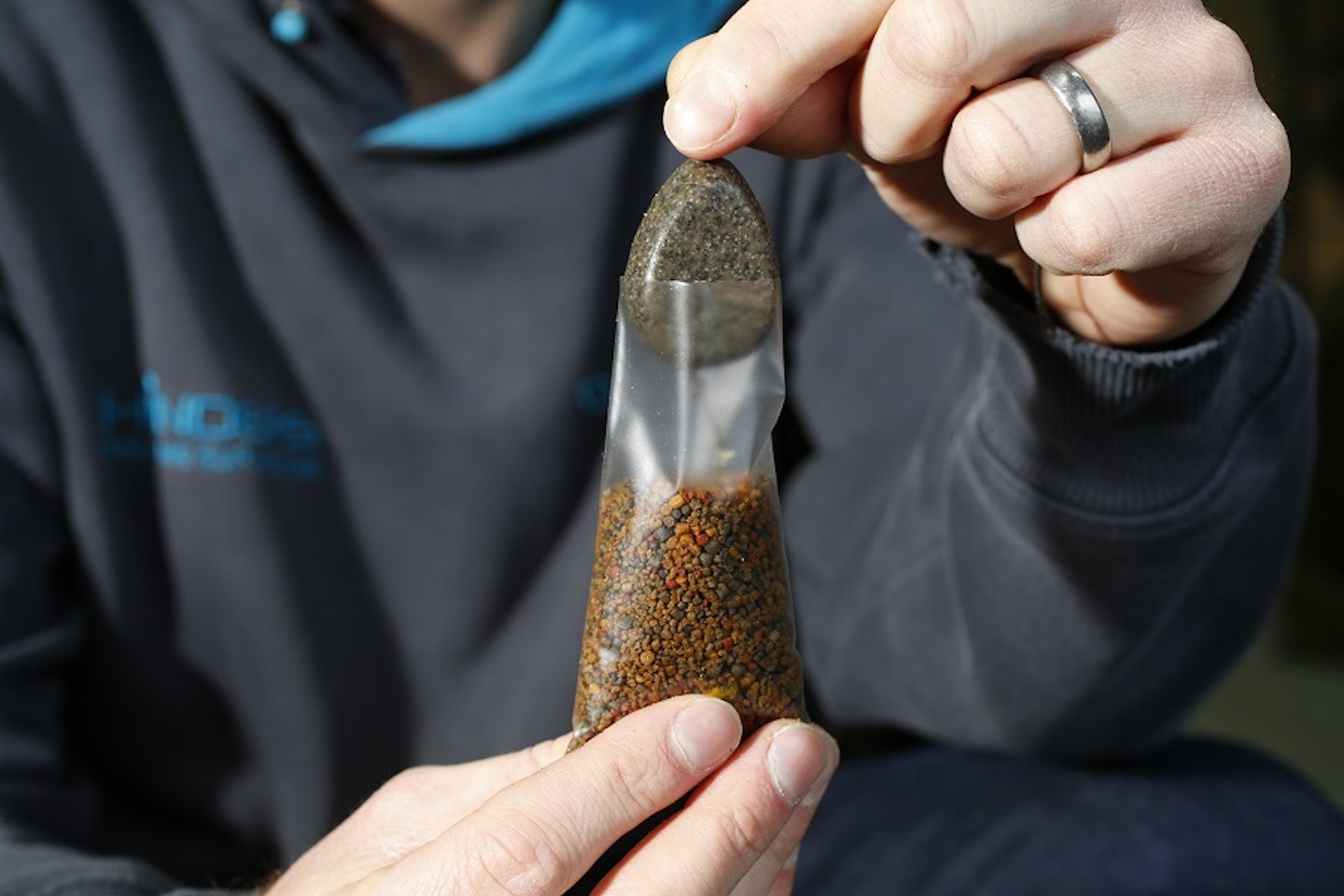
- Then I push the lead into the pellets, probably three-quarters of the way into the pellets so you’ve probably got about an inch gap between the lead and the hookbait.

- I then top up with pellets so it covers the top of the lead. The bag is actually probably only going to be about three-quarters full in total. Then all I do is tap it on my hand to compact it down, before twisting the top.

- When you’re twisting the top you’re compacting it even more and taking all the air out of it.
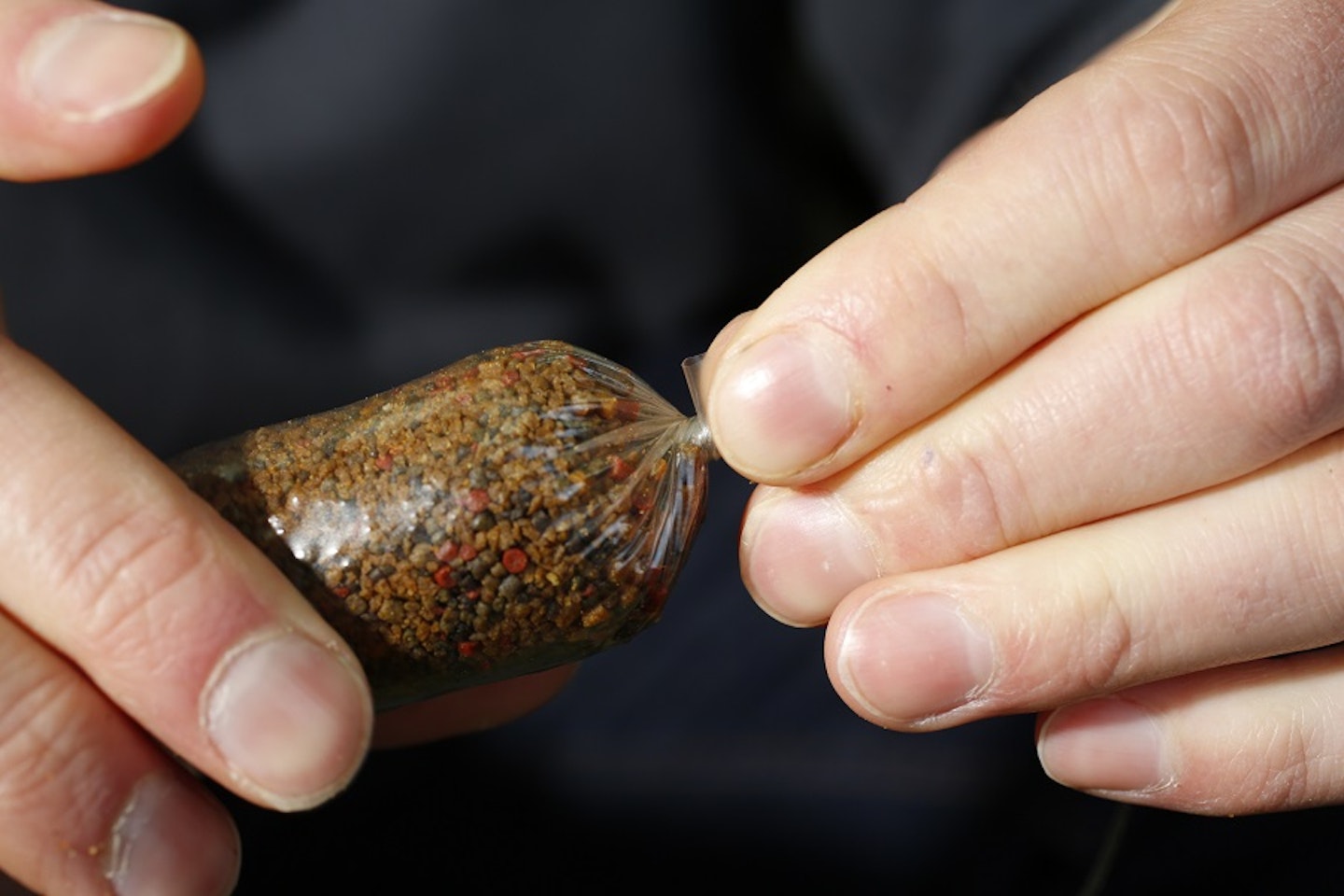
- Once I’ve twisted the top, I shape the bag with my hand. Then using PVA tap, not string, I tie the top. I do two wraps round and then an overhand knot. I don’t twist and lick the top, because I think I can get it tighter using the PVA tape and I can also trim all of the excess off so you get less PVA residue.
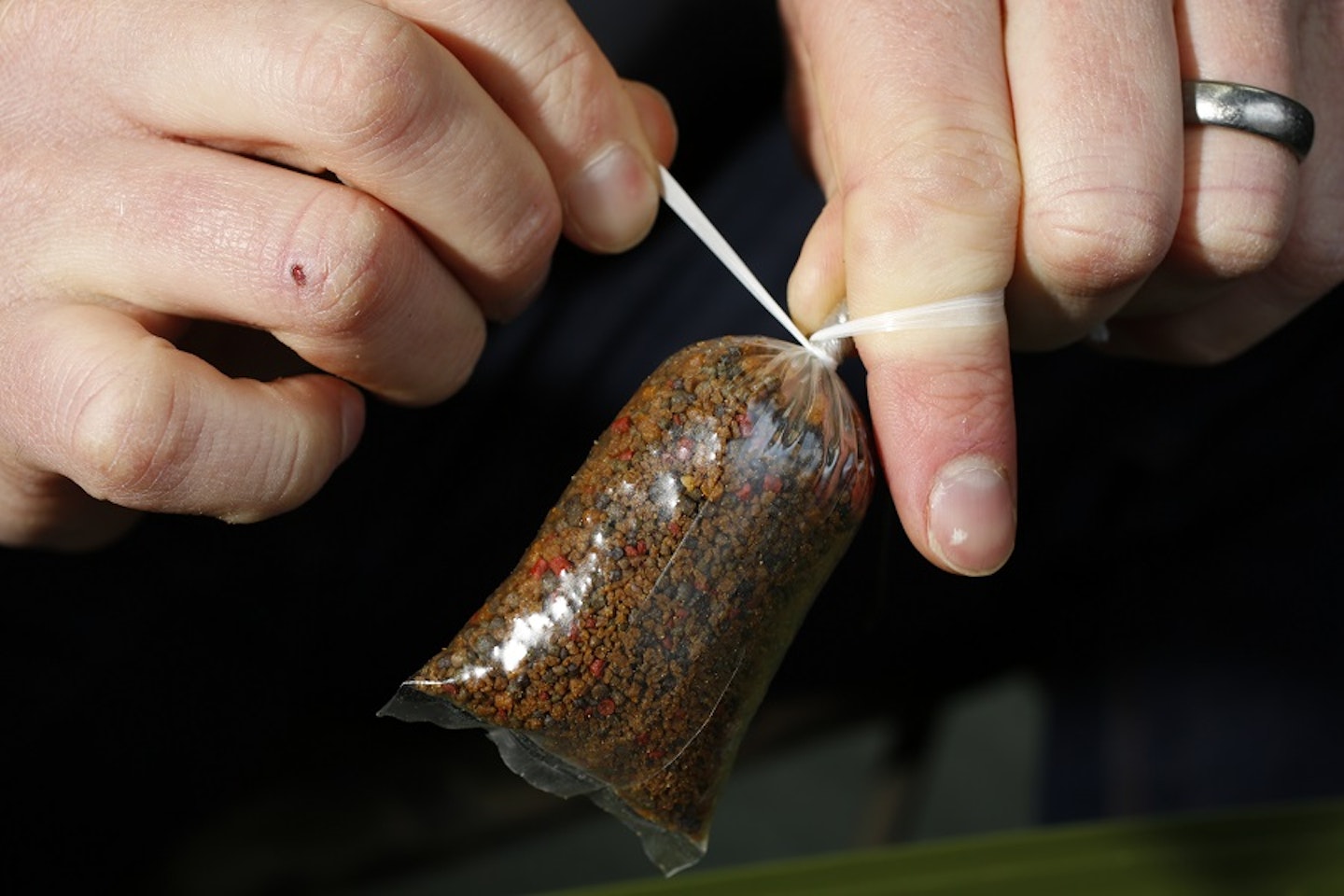
- After trimming off all the excess from the knot, I lick and fold the corners to make it more aerodynamic.
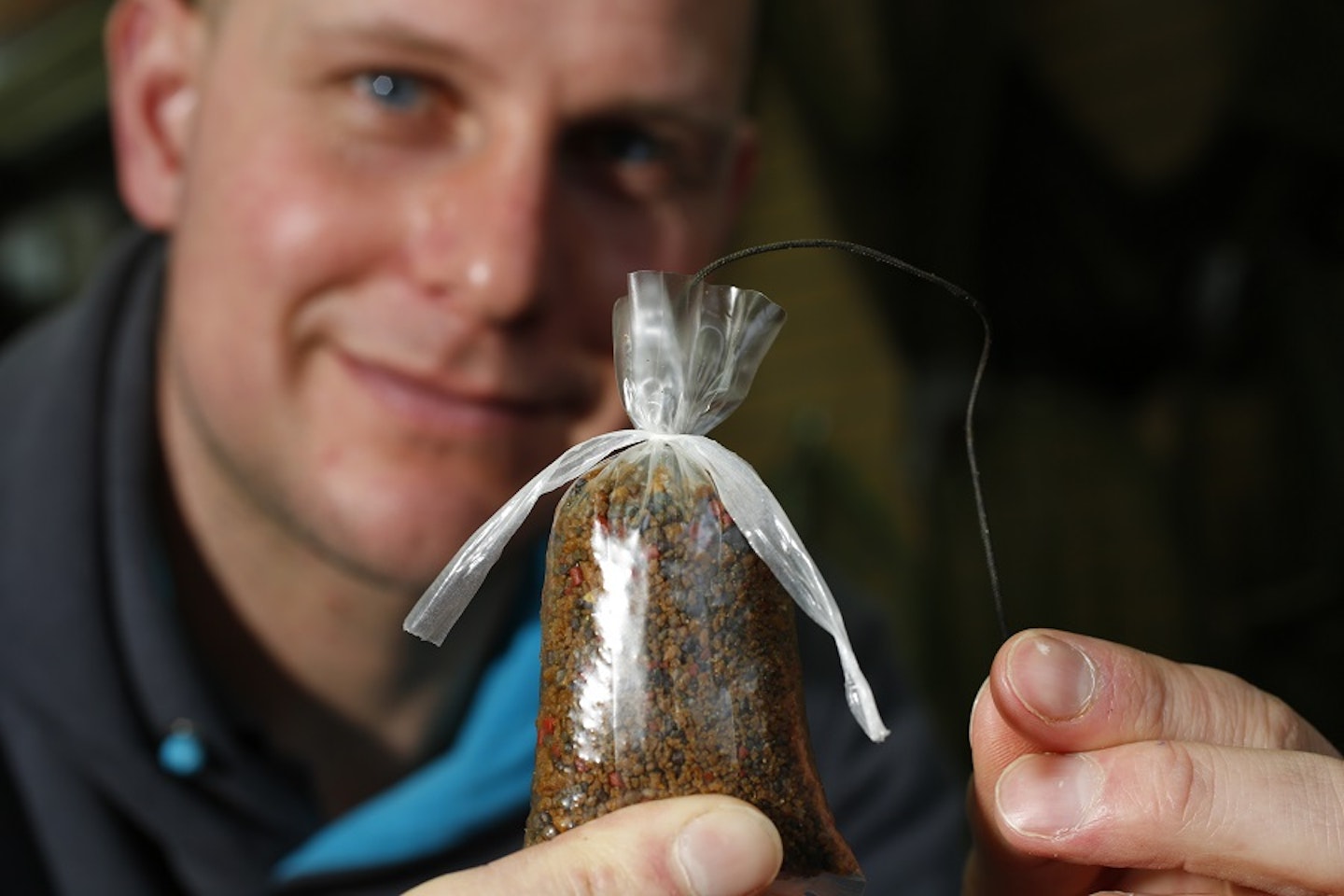 1 of 6
1 of 6F3A8304
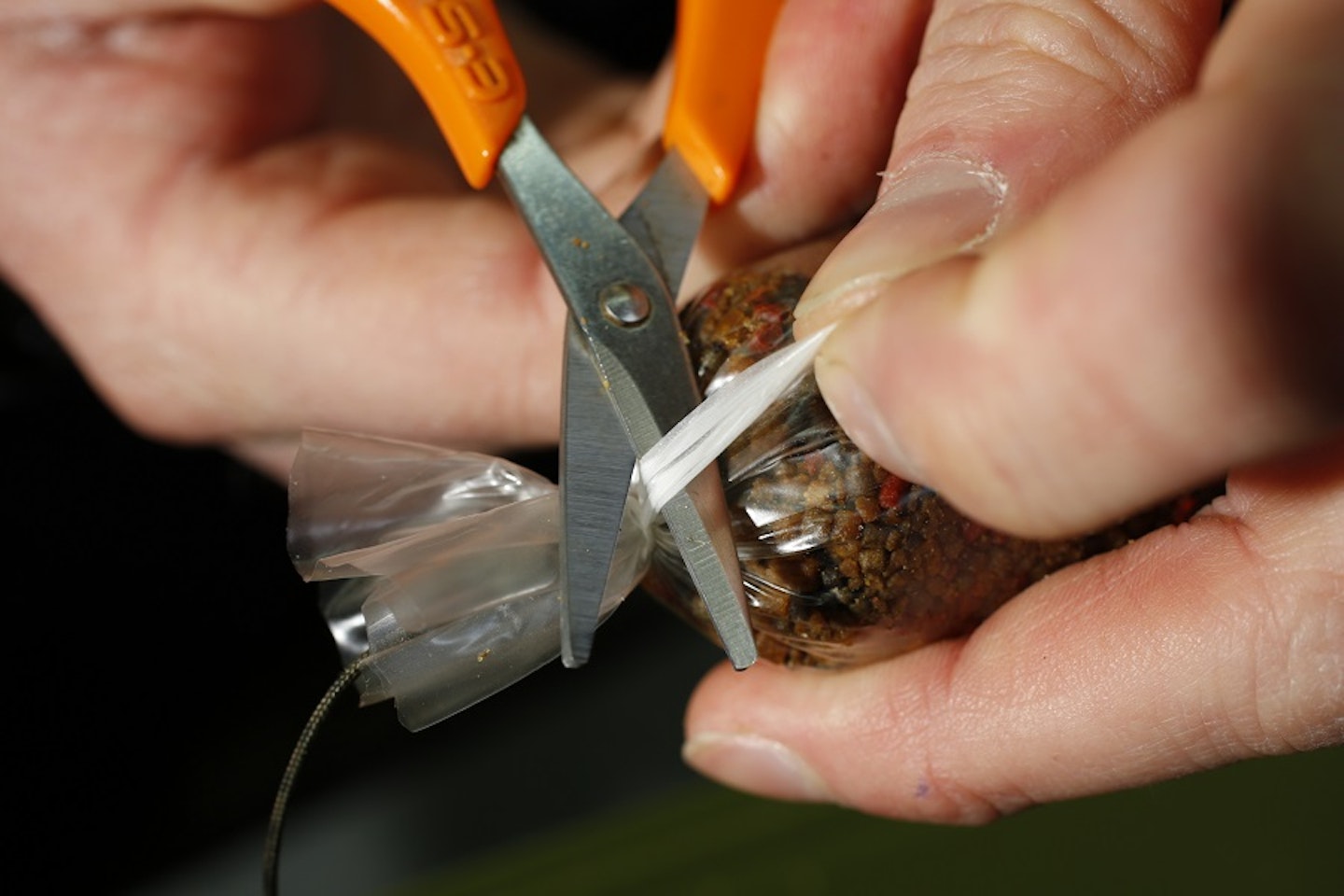 2 of 6
2 of 6F3A8312
 3 of 6
3 of 6F3A8322
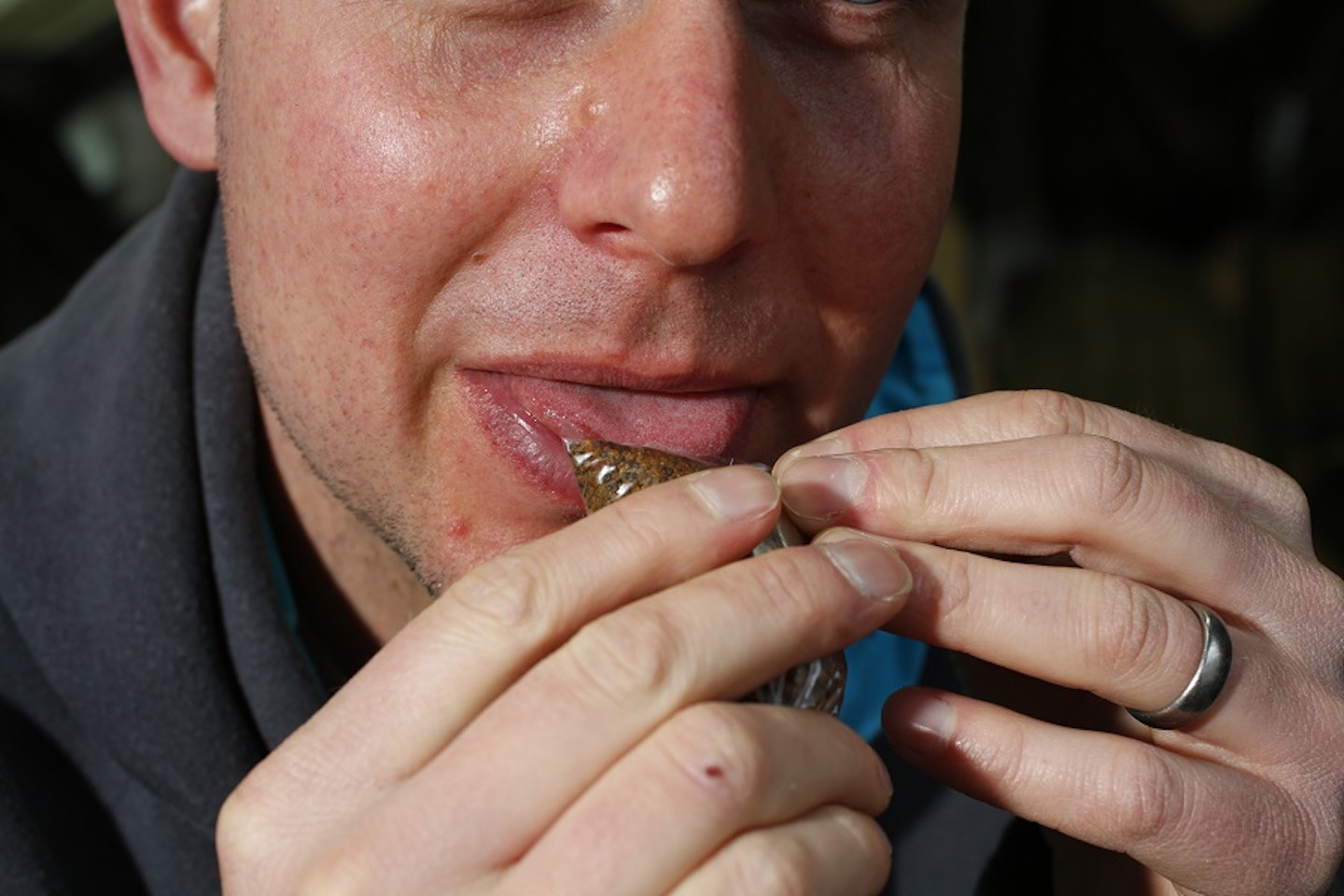 4 of 6
4 of 6F3A8318
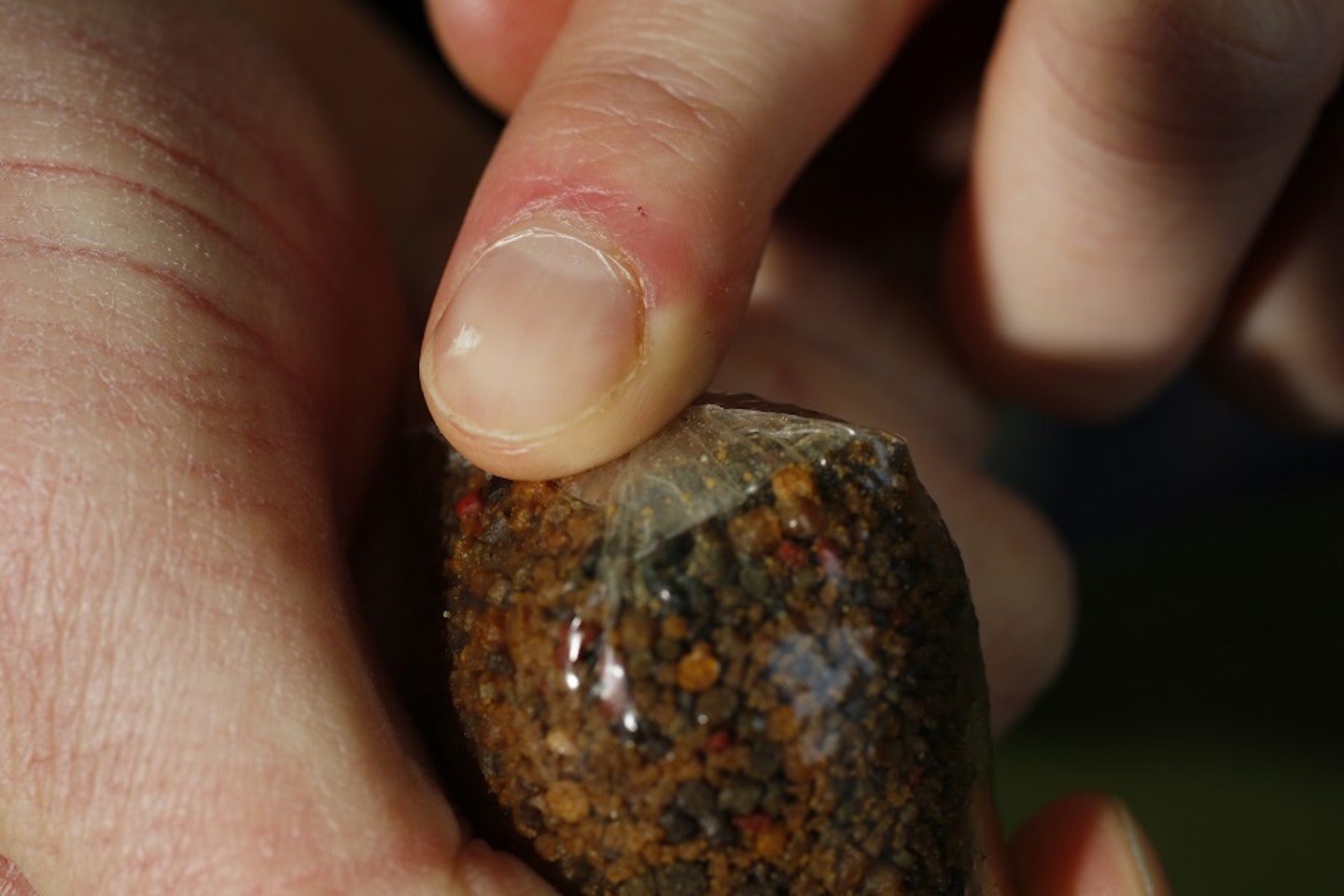 5 of 6
5 of 6F3A8326
 6 of 6
6 of 6